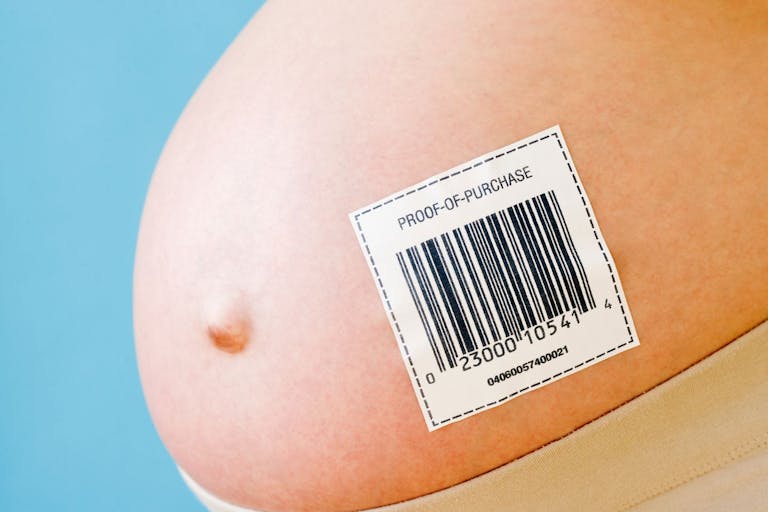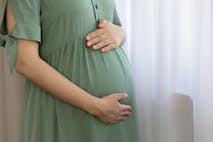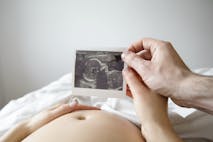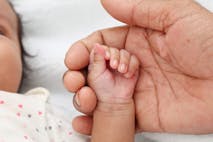
The UK's disturbing double standard regarding adoption and surrogacy
Angeline Tan
·
Data shows more abortion-minded women are visiting pregnancy help centers
(Pregnancy Help News) Numerous studies and reports over the last several months have highlighted the positive impact pregnancy centers have for women, children, families, and communities. But a closer look at some of the numbers shows that pregnancy help provides even greater benefit than previously thought for those women and families.
The Charlotte Lozier Institute’s (CLI) latest national pregnancy center report, “Hope for a New Generation,” compared 2022 results with its 2019 (pre-Dobbs) report. Findings included the fact pregnancy centers served nearly 975,000 clients with an estimated service value of $358 million at no cost to those clients.
Updates to that 2022 report show the total number of client contacts, in-person and virtual, amounted to more than 16 million and that eight in 10 pregnancy center locations offer medical services.
“When you think about 16 million occasions that pregnancy centers interacted caring for women, men, and families in one year, it speaks to the reach of the 2,750 centers we studied and their impact on communities,” said Moira Gaul, CLI associate scholar. “This result which is a new metric we studied was powerful to see.”
CLI is the research arm for national pro-life group Susan B. Anthony Pro-Life America. It studies and publishes extensively on pregnancy help and abortion policy.
The implications of some of the stats in CLI’s latest report showing significant increases in medical services provided by pregnancy centers might not have been fully recognized amid all the results.
READ: A growing number of Americans call themselves ‘pro-choice’ – but what’s really behind it?
For example, researchers found a 12 percent increase in the number of ultrasounds provided by pregnancy centers and a 27 percent increase in the number of STI tests – at the same time there was a 1 percent increase in new clients. Without a significant increase in pregnancy medical centers, this would suggest that more women at risk for abortion are going to pregnancy centers for services.
Gaul said this increase is likely not attributable to just one trend.
“However, looking at the totality of results in our study, they suggest that U.S. pregnancy centers served a higher number of pregnant women in 2022 than in 2019,” she said. ‘These are women and couples that pregnancy centers want to serve with medical services, important health education and care, material services, community referrals, and ongoing support.”
Those numbers speak volumes about pregnancy centers, said Christa Brown, senior director of medical impact at Heartbeat International. Heartbeat is the largest network of pregnancy help organizations in the U.S. and the world.
“The abortion industry continues to offer less and less medical care,” Brown said. “And pregnancy help medical clinics are rising to the needs of their communities,” she said.
“As chemical abortion has become more and more common, the pills are now passed over the counter in abortion facilities by non-medical staff, obtained through telehealth, websites and sometimes even through a quick chat on a social media platform,” said Brown. “There is very little assessment including ultrasound being performed by abortionists anymore at all. Women are seeking information about their pregnancies evidenced by the 12% increase in ultrasound.”
Along with the marked increase in services provided by pregnancy centers, the centers also scored a 97 percent satisfaction rate, according to the CLI report.
CLI partnered with several organizations, including Care Net, Heartbeat International, National Institute of Family and Life Advocates (NIFLA), and Focus on the Family Option Ultrasound leadership to conduct the study.
“Pregnancy centers across the country completed one of two online surveys with their 2022 calendar year data,” Gaul said. “The Charlotte Lozier Institute combined the two datasets from these two surveys and controlled for duplicates.”
Additionally, CLI partnered with various state coalition leaders for pregnancy centers and requested data from charitable funding organizations and medical mobile unit/clinic groups.
READ: A growing number of Americans call themselves ‘pro-choice’ – but what’s really behind it?
“We also interviewed women who had visited pregnancy centers as well as pregnancy center staff and leadership we highlighted in the report,” she said.
Another major increase from 2019 to 2022 was the number of women and men who attended prenatal and parenting education classes.
Article continues below
Dear Reader,
Have you ever wanted to share the miracle of human development with little ones? Live Action is proud to present the "Baby Olivia" board book, which presents the content of Live Action's "Baby Olivia" fetal development video in a fun, new format. It's perfect for helping little minds understand the complex and beautiful process of human development in the womb.
Receive our brand new Baby Olivia board book when you give a one-time gift of $30 or more (or begin a new monthly gift of $15 or more).
CLI researchers noted a 41 percent jump in this, from about 291,000 in 2019 to more than 409,000.
The value of material services, including baby items, also rose substantially, from roughly $26.7 million to nearly $78.6 million, with the inclusion of two new items, new cribs and infant formula.
Brown noted the importance of resources for women facing unplanned pregnancies.
“Women are seeking good counsel, resources and solid information in a place where their needs matter,” she said. “They want clarity about all of their choices. They don’t want to be rushed into a decision. They want long-term support such as prenatal and parenting education. They are finding this in pregnancy help medical Clinics.”
Heartbeat International’s latest Life Trends Report shows a steady increase in programs and services provided by pregnancy help centers. Seventy-nine percent of Heartbeat affiliates offer material assistance, and 76 percent provide parenting classes. Forty-four percent now provide a men’s ministry, and 44 percent offer childbirth classes. Additionally, 76 percent provide ultrasound, a very critical service post-Dobbs.
“As women are weighing pregnancy options, they need to know if they have a continuing pregnancy or are they having an impending miscarriage,” Brown told Pregnancy Help News. “They need to know the dating of their pregnancy before they swallow abortion pills at home. And they need to be sure they do not have an ectopic pregnancy which could put her in imminent danger as she manages her own abortion symptoms without medical oversight.”
Despite attacks in several states, including Colorado and New York, Abortion Pill Reversal (APR) offerings have steadily risen in pregnancy help medical clinics. Heartbeat’s Life Trends Report shows a seven percent increase in two years, from 24 percent of affiliates providing the service in 2021 to 31 percent offering APR in 2023. Additionally, the report states a 43 percent increase in reversal starts since 2020.
“Pregnancy centers are truly responding to address another great need, when a woman regrets starting this type of abortion,” Gaul said. “We hope to see APR service provision continue to climb.”
The Life Trends Report shows that 80 percent of abortions are now chemical, and that 75 percent of APR callers who disclosed when they had started the abortion process called within 24 hours of taking the first drug. The report also cites an important statistic, that, in a recent study, one in four women described their abortions as unwanted or coerced.
Pregnancy centers provide true choice needed for a woman to understand her pregnancy more deeply, through education on all options, medical services, and the chance to reverse a chemical abortion.
“There is more recent evidence outside of our study which suggests that higher numbers of abortion-minded women are making life decisions for their unborn children after visiting pregnancy centers as compared to previous years.” Gaul said.
The CLI and Heartbeat reports speak clearly to the value of pregnancy centers despite what pro-abortion advocates say and what they do to try to shut down centers across the country.
“This real healthcare is what ultimately makes abortion unwanted and unthinkable,” Brown said.
“The growing numbers of women, men and families receiving specific services confirm the critical role pregnancy centers hold in a post-Dobbs America and that they are foundational to a nationwide pro-life safety net,” Gaul said.
“There are many factors influencing visits to pregnancy centers,” she said. ‘While there’s a patchwork of states with laws to protect unborn children, and many states with permissive abortion laws, the need for pregnancy help and services which pregnancy centers provide has remained in all states post Dobbs.”
“Indeed, the need has grown,” Gaul added. “The continually rising number of drug-induced abortions and its availability are additional factors.”
“In communities across the country pregnancy centers are filling a healthcare gap for women and families that promotes improved health for women and children and family well-being,” said Gaul. “They are helping to address an unmet need for authentic pregnancy help.”
Editor’s note: Heartbeat International manages Pregnancy Help News.
Editor’s Note: This article was originally published by Pregnancy Help News and is reprinted here with permission.
Live Action News is pro-life news and commentary from a pro-life perspective.
Contact editor@liveaction.org for questions, corrections, or if you are seeking permission to reprint any Live Action News content.
Guest Articles: To submit a guest article to Live Action News, email editor@liveaction.org with an attached Word document of 800-1000 words. Please also attach any photos relevant to your submission if applicable. If your submission is accepted for publication, you will be notified within three weeks. Guest articles are not compensated (see our Open License Agreement). Thank you for your interest in Live Action News!

Angeline Tan
·
Politics
Nancy Flanders
·
Guest Column
Mark Lee Dickson
·
Guest Column
Mark Lee Dickson
·
Activism
Nancy Flanders
·
Activism
Nancy Flanders
·
Guest Column
Gayle Irwin
·
Guest Column
Gayle Irwin
·
Guest Column
Gayle Irwin
·
Guest Column
Gayle Irwin
·
Abortion Pill Reversal
Gayle Irwin
·